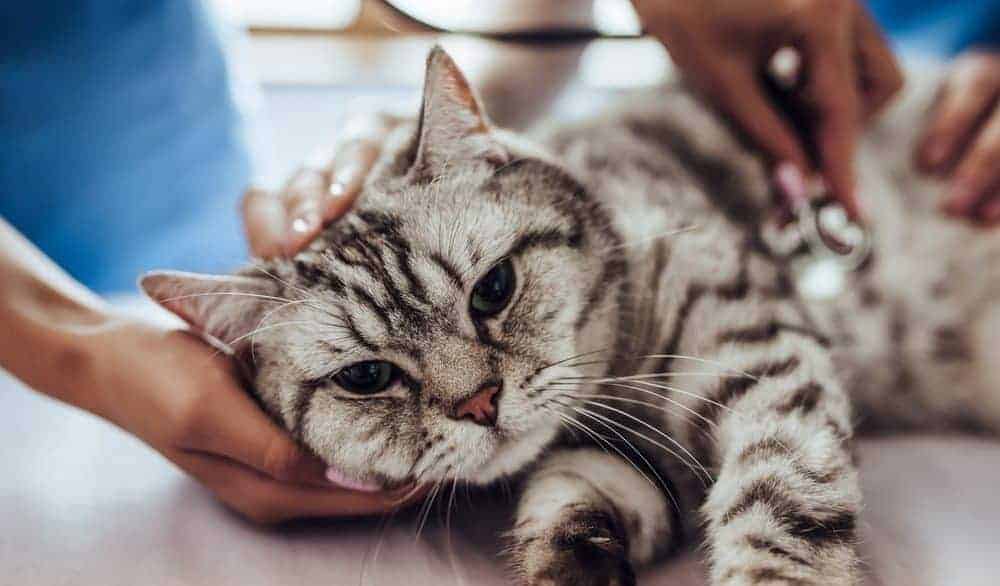
Cats have many silky skills. For example, thanks to their large eyes and slit-like pupils, they can see much better than we can at dawn and dusk. Flexible felines can slip through unbelievably small spaces due to their free-floating clavicle bones. They can even talk to us, via meowing – something that’s reserved just for humans – you won’t catch a cat meowing at another cat. They’re also experts at hiding when they’re ill.
This trait is likely due to the fact that, as hardwired solitary hunters that have to rely on themselves for survival, revealing signs of illness would make them vulnerable to predators. And it’s a behaviour that even the most pampered pet pussycat displays. However, this makes regular vet check-ups essential so that any potential health problems can be identified early and treated before they become more serious.
Is your cat really fine?
However, according to a study conducted by Bayer Veterinary Healthcare, the number of veterinary visits for cats has fallen 30% since 2001. And, with 58% of owners saying their ‘cat hates going to the vet’, it’s not really a surprise that some people avoid taking their pet for regular check-ups. What’s more, the PDSA’s recent PAW report reveals that although 84% of cat owners have currently registered their cat with a vet, 16% haven’t. This means that there are 1.7 million UK cats not registered. The report states that more than half (54%) of owners who haven’t currently registered their cat with a vet think it’s not necessary because their ‘pet is fine’.
DID YOU KNOW?
Feline experts recommend that kittens should visit the vet at least every two months, adults yearly and senior cats every six months.
To encourage owners (and their pets) to be more willing to attend regular health checks, International Cat Care has launched an initiative called Cat Care for Life. This programme is all about providing a partnership of care between owners and their veterinary clinic to reduce the stress of vet visits and benefit the lifelong health of pet cats.
The feline welfare charity states: “We recognise that because of their unique nature and needs, taking cats to visit a veterinary clinic can be very stressful, both for cats and owners. The Cat Friendly Clinic programme is designed to help address these issues by creating more cat friendly veterinary clinics and so reducing the stress for cats and making veterinary visits easier for cat owners as well. There are now cat-friendly clinics registered across the world, which have been awarded Gold, Silver or Bronze status.” You can find a Cat Friendly Clinic near you here.
International Cat Care also has lots of useful resources, including:
HELP YOUR CAT GET USED TO BEING HANDLED
Often, cats are not used to being held or touched in the way vets will. Get your cat comfortable with having its ears, mouth, coat, paws and eyes checked, with these handling videos
TAKE THE STRESS OUT OF GETTING THERE AND BACK
Is getting your cat into the carrier and to and from the vet the most stressful part of the experience? Check out the carrier and travel videos
FIND RELEVANT LIFE-STAGE HEALTHCARE INFORMATION
Select your pet’s age category and download examination checklists and forms to record essential information about your cat
If you found this interesting, you may also like:
LONG LIVE CATS!
The world’s oldest cat – Creme Puff, from Austin, Texas – lived to see her 38th birthday earning her a place in the Guinness Book of Records. While reaching such a great age is rare, the average lifespan our pet cats is between 15 to 17 years, with some even reaching their 20s. Follow our 12 top tips to help your cat enjoy a happy, healthy and long, long life,
UNRAVELLING THE MYSTERIES OF A CAT’S PURR
Our cats may purr when we pet them to show they’re happy, but experts believe that purring is a much more complicated form of communication than we've previously assumed.
READ MY BODY LANGUAGE
You and your cat might speak different languages, but look closer and you’ll see that your favourite feline is using their whole body to tell you how they’re feeling…
10 THINGS I HATE ABOUT YOU
If our feline friends could tell us what they really think, here’s what they’d probably say about some of the things we do that they’re none too happy about...
Sources: Icatcare.org, pdsa.org.uk, 1.Volk JO, Felsted KE, Thomas JG, et al. 2011. Executive summary of the Bayer veterinary care usage study. J Am Vet Med Assoc. 238(10):1275–1282.














